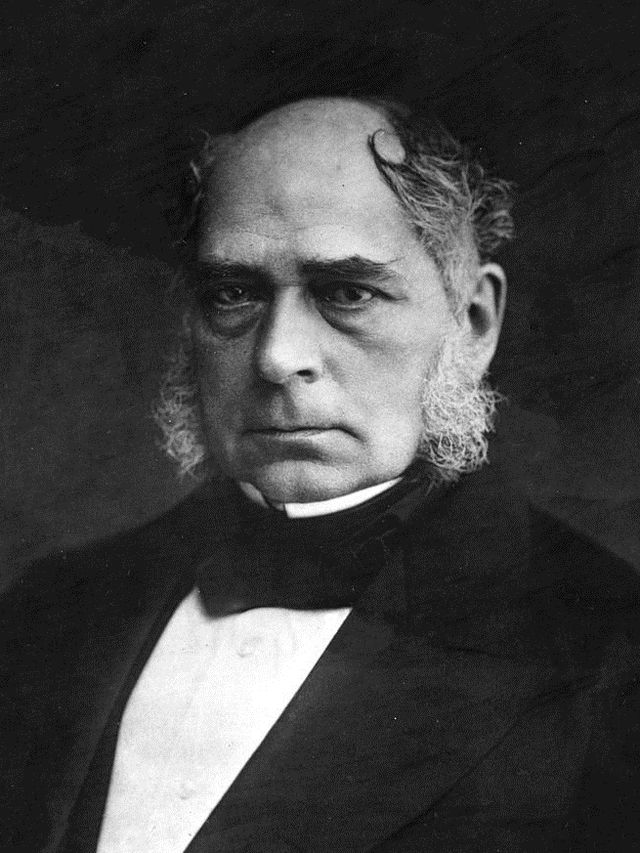Henry Bessemer, the renowned inventor and engineer, is credited with revolutionizing the steel industry with his groundbreaking invention, the Bessemer converter. Born on January 19, 1813, in Charlton, Hertfordshire, England, Bessemer dedicated his life to finding a way to manufacture steel inexpensively. His relentless pursuit of this goal led to the development of the Bessemer converter in 1856, and subsequently transformed the world of structural engineering.
Before the advent of the Bessemer converter, steel was a costly and labor-intensive material to produce. Its manufacturing process involved time-consuming and expensive methods that limited its use to only a few applications. However, Bessemer’s innovative converter changed all that.
Bessemer’s initial motivation for inventing the converter was to reduce the cost of steel-making for military ordnance production. He aimed to make steel easier, quicker, and cheaper to manufacture, thus providing a more cost-effective solution for military purposes. Little did he know that his invention would have far-reaching implications for the entire construction industry.
The Bessemer converter operated by blowing air through molten pig iron, a process known as blowing air through molten metal. This technique effectively removed impurities from the iron, resulting in the production of high-quality steel. The converter allowed for the mass production of steel, which had previously been a luxury material, and transformed it into an affordable and readily available resource.
As a result of the Bessemer Process, steel became the dominant construction material of the modern world. Its cost-effectiveness and mass-producibility made it suitable for a wide range of applications. Skyscrapers, immense suspension bridges, thousands of miles of railroad tracks, and even automobiles owe their existence to Henry Bessemer’s ingenuity.
The impact of the Bessemer converter on structural engineering cannot be overstated. It opened up endless possibilities for architects and engineers, enabling them to construct larger, stronger, and more durable structures. The ability to produce steel quickly and inexpensively sparked a construction boom, transforming skylines across the globe.
Beyond its immediate influence on construction, the Bessemer converter also played a significant role in advancing industrialization. The mass production of steel led to the development of new industries and the creation of countless jobs. It propelled economic growth and fostered technological advancements in various fields.
In recognition of his monumental contributions, Henry Bessemer was knighted in 1879, honoring his achievements in the world of engineering and manufacturing. His invention continues to shape our world today, enabling us to build taller, stronger, and more innovative structures than ever before.
The Bessemer converter, invented by Henry Bessemer, revolutionized the steel industry and transformed the field of structural engineering. This ingenious invention made steel cost-effective and mass-producible, making it the dominant construction material of our modern world. The impact of the Bessemer Process on architecture, industrialization, and technological advancement cannot be overstated. Henry Bessemer’s ingenuity and dedication have left an indelible mark on our society, forever changing the way we build and innovate.

What Was Henry Bessemer’s Invention Called?
Henry Bessemer’s invention is called the Bessemer converter. This revolutionary invention, developed in 1856, was the first process for manufacturing steel inexpensively. The Bessemer converter played a crucial role in the industrialization of steel production, making it more accessible and affordable. Its impact was significant, as it paved the way for the widespread use of steel in various industries, including construction, transportation, and manufacturing. Sir Henry Bessemer, the inventor, received a knighthood in 1879 in recognition of his groundbreaking contribution to the steel industry.
What Was The Impact Of Henry Bessemer’s Invention?
The impact of Henry Bessemer’s invention, the Bessemer Converter, was revolutionary. It completely transformed the process of steel production, leading to the mass production of steel and making it a widely available building material. This invention had a profound effect on various industries and played a crucial role in shaping the modern world.
1. Industrial Revolution: The Bessemer Converter was a significant development during the Industrial Revolution. It allowed for the large-scale production of steel, which was vital for the construction of factories, machinery, and infrastructure. The availability of steel on such a scale fueled the rapid industrialization of many countries.
2. Construction and Architecture: The mass production of steel made it possible to construct taller and more durable buildings. Skyscrapers became a reality, transforming city skylines worldwide. The strength and versatility of steel also enabled the construction of massive suspension bridges, such as the Brooklyn Bridge, and other engineering marvels.
3. Transportation: The Bessemer Converter’s impact on transportation was immense. Steel became the primary material for railroad tracks, making train travel faster and more efficient. The expansion of railway networks across continents was made possible by the availability of affordable steel. Additionally, the automotive industry flourished, as the strength and durability of steel were crucial for manufacturing automobiles.
4. Infrastructure: Steel became crucial for the development of infrastructure projects. Bridges, tunnels, dams, and canals could be built stronger and more efficiently using steel. This led to the creation of extensive transportation networks and improved access to resources and markets.
5. Military and Defense: The availability of mass-produced steel had a significant impact on military capabilities. Steel was used in the construction of battleships, tanks, and artillery, providing superior strength and firepower. This influenced the outcome of wars and had a lasting impact on military strategies.
6. Economic Growth: The ability to mass-produce steel resulted in a significant boost to economies worldwide. Steel production became a major industry, providing employment opportunities and driving economic growth. The availability of affordable steel also facilitated the growth of other industries, such as manufacturing and construction.
Henry Bessemer’s invention of the Bessemer Converter revolutionized steel production and had a profound impact on the world. It enabled the mass production of steel, making it a widely available building material. This led to the construction of skyscrapers, massive bridges, extensive railway networks, and the growth of various industries. The invention of the Bessemer Converter played a crucial role in shaping the modern world we live in today.
Why Did Henry Bessemer Invent Steel?
Henry Bessemer invented steel because he wanted to reduce the cost of steel-making for military ordnance. He developed a system that involved blowing air through molten pig iron, which effectively removed impurities from the metal. This process made the manufacturing of steel easier, quicker, and cheaper, ultimately revolutionizing the field of structural engineering. The key reasons for Bessemer’s invention can be summarized as follows:
1. Cost reduction: Bessemer aimed to lower the cost of producing steel, particularly for military purposes. By developing his air-blowing technique, he found a way to remove impurities from molten pig iron more efficiently and economically than traditional methods. This cost reduction made steel more accessible and affordable for various applications.
2. Military ordnance: Bessemer’s primary motivation for inventing steel was to meet the growing demands of the military. Steel was a crucial material for producing weapons, ammunition, and other military equipment. By making the steel-making process more efficient, Bessemer sought to contribute to the defense capabilities of nations.
3. Improved manufacturing process: Prior to Bessemer’s invention, the production of steel was a time-consuming and expensive process. The traditional method of removing impurities involved manual labor and was not as effective. Bessemer’s technique of blowing air through molten pig iron, known as the Bessemer process, significantly accelerated the steel-making process while also reducing costs.
4. Revolutionizing structural engineering: Bessemer’s invention revolutionized the field of structural engineering. With the availability of cheaper and more abundant steel, architects and engineers could design and construct structures that were previously unfeasible or prohibitively expensive. Steel’s strength, durability, and versatility played a crucial role in the construction of various infrastructure projects, including bridges, skyscrapers, railways, and ships.
Henry Bessemer invented steel to reduce the cost of steel-making for military ordnance. His innovative technique of blowing air through molten pig iron revolutionized the manufacturing process, making steel easier, quicker, and cheaper to produce. This invention had a significant impact on structural engineering, enabling the construction of remarkable structures and contributing to various industries.
How Did Henry Bessemer Change The World?
Henry Bessemer changed the world through his invention of the Bessemer Process, which revolutionized the production of steel. Here are some key ways in which Bessemer’s invention had a significant impact:
1. Cost-effectiveness: The Bessemer Process made the production of steel more cost-effective than ever before. This was achieved by using a converter to blow air through molten iron, removing impurities and converting it into steel. By eliminating the need for expensive and time-consuming manual labor, Bessemer made steel production more efficient and affordable.
2. Mass production: Prior to the Bessemer Process, steel was a relatively rare and expensive material. The invention made it possible to mass-produce steel, leading to its widespread availability and affordability. This had a profound impact on industries such as construction, transportation, and manufacturing, as steel became the preferred material for various applications.
3. Industrial growth: The availability of affordable steel fueled industrial growth in the 19th and 20th centuries. Steel became the backbone of infrastructure development, enabling the construction of bridges, railways, buildings, and ships. The Bessemer Process played a crucial role in the expansion of industries like manufacturing, engineering, and construction, driving economic progress and urbanization.
4. Structural innovation: The advent of cost-effective steel led to significant advancements in structural engineering and architecture. Steel’s strength, durability, and versatility allowed for the construction of taller buildings, longer bridges, and larger ships. This had a profound impact on the skylines of cities worldwide, as well as on transportation networks and global trade.
5. Technological advancement: The Bessemer Process not only transformed the steel industry but also paved the way for further technological advancements. It encouraged innovation in manufacturing processes, machinery, and industrial automation. The development of new alloys and steel grades also became possible, leading to the creation of specialized steels for various applications.
6. Global impact: The Bessemer Process had a global impact, transforming industries and economies around the world. It helped fuel the Industrial Revolution and contributed to the rise of nations as industrial powerhouses. The availability of affordable steel also played a crucial role in the expansion of railways, enabling the interconnectedness of nations and the growth of international trade.
Henry Bessemer’s invention of the Bessemer Process revolutionized the production of steel, making it cost-effective and mass-producible. This had far-reaching consequences, including industrial growth, technological advancement, and the transformation of global infrastructure. The impact of the Bessemer Process continues to be felt to this day, as steel remains a vital material in various industries.
Conclusion
Henry Bessemer’s invention of the Bessemer converter revolutionized the steel industry and changed the world. By developing a process for manufacturing steel inexpensively, he made steel a mass-produced building material. This invention allowed for the construction of skyscrapers, huge suspension bridges, thousands of miles of railroad tracks, and automobiles. Prior to the Bessemer process, steel was expensive and difficult to produce, limiting its use in construction. However, with the introduction of the Bessemer converter, steel became cost-effective and mass-producible, making it the dominant construction material of the modern era. This invention not only transformed structural engineering but also had a significant impact on various industries and ultimately shaped the world we live in today. Henry Bessemer’s ingenuity and contribution to steel-making have left an indelible mark on history, and his legacy continues to be celebrated for its immense impact on industrial development.












